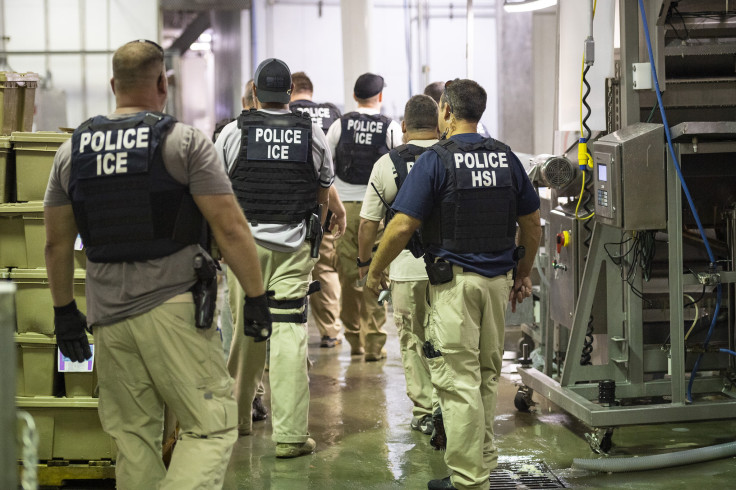
A 32-year-old Chinese man has taken his own life just five days after entering US Immigration and Customs Enforcement (ICE) custody, in an incident that has reignited concerns over the safety and conditions inside America's immigration detention system.
From Arrest to Tragedy
ICE identified the man as Chaofeng Ge, a Chinese national arrested on 23 January by Lower Paxton Township Police in Pennsylvania on charges of criminal use of a communication facility, unlawful computer use, and access device fraud. The following day, ICE's Enforcement and Removal Operations (ERO) lodged an immigration detainer.
On 31 July, Ge pleaded guilty to unauthorised device access and conspiracy, receiving concurrent sentences of six to 12 months. He was released directly into ICE custody and transferred to the Moshannon Valley Processing Centre (MVPC).
According to ICE, standard protocol was followed, including notifications to the Department of Homeland Security (DHS), the Office of Inspector General, the Office of Professional Responsibility, and the Chinese Embassy.
What ICE Claims on Deceased Immigrant
In a statement regarding the incident, ICE stated that on January 23, Lower Paxton Township Police arrested Ge for criminal use of a communication facility, unlawful computer use, and access device fraud. ICE Philadelphia's ERO York office lodged an immigration detainer the next day.
On July 31, Ge pleaded guilty to unauthorised device access and conspiracy, receiving concurrent six-to-12-month sentences with immediate release to ICE custody. ERO York processed and transferred him to the Moshannon Valley Processing Centre (MVPC). In line with policy, ICE notified DHS, the Inspector General, OPR, and the Chinese Embassy.
According to recordings from Broadcastify, which archives first responder communications nationwide, Ge was last seen alive at 4:30 a.m. on Tuesday. About an hour later, he was found in a shower room, suspended by a ligature and in cardiac arrest. First responders reported that he was "cut down," given CPR, and subjected to other intensive medical efforts. He was pronounced dead around 6 a.m.
ICE Defends Prisons' Conditions
In the same statement, ICE states that it remains committed to ensuring that all those in its custody reside in safe, secure, and humane environments.
'All people in ICE custody receive medical, dental and mental health intake screening within 12 hours of arriving at each detention facility, a full health assessment within 14 days of entering ICE custody or arrival at a facility, access to medical appointments and 24-hour emergency care. At no time during detention is a detained illegal alien denied emergent care,' they explained.
The agency also added that they make official notifications to Congress, nongovernmental organisation stakeholders, and the media upon an official report of a detained illegal alien's death and post a news release with relevant details on the ICE public website within two business days per agency policy.
But How Are The Prisons?
Speaking to The Intercept anonymously, a former detainee at MVPC, held there in late 2023 and later released, claimed that he continues to keep in contact with people still inside. He also noted that confinement at Moshannon is particularly difficult for Chinese detainees.
'Language translation services are lacking, so people feel isolated,' said the immigrant. 'And after they are judged removable, ICE takes five or six months to collect enough of them to fill a deportation flight for China. The stress of the waiting is bad.'
Across several ICE-managed and contracted facilities, detainees report alarming conditions—overcrowding, unsanitary environments, and a lack of medical and mental health care. At the Northwest Detention Centre in Tacoma, hunger strikes have erupted over 'severely unsanitary conditions' and limited medical attention.
In Manhattan's 26 Federal Plaza holding site, a court ordered improvements after detainees were confined in cramped, dirty rooms without soap or sleeping mats.
'These are the worst conditions I have seen in my 20-year career,' Paul Chavez, litigation and advocacy director at Americans for Immigrant Justice, told the New York Times. 'Conditions were never great, but this is horrendous.'
How Prevalent are Deaths in ICE Facilities?
Between fiscal years (FY) 2021 and 2023, ICE reported 12 deaths in its custody—a decline from 38 deaths reported during FY 2018–2020. The death rate per 100,000 admissions dropped from a pandemic peak of 10.83 in FY 2020 to 3.25 in FY 2021, 0.94 in FY 2022, and 1.46 in FY 2023.
However, the 2025 fiscal year is proving to be one of the deadliest on record, with 13 deaths already reported—surpassing the 12 total recorded in FY 2024 and raising alarms amid dire overcrowding.
Taken together, these accounts reveal a troubling portrait of ICE's detention system—one marked by rapid expansion, insufficient resources, and preventable tragedies. From allegations of overcrowding and neglect to the steady toll of in-custody deaths, the data and testimonies suggest systemic failures that persist despite official oversight and reporting requirements.
A System Under Scrutiny
Ge's death adds to a troubling record of fatalities and allegations of neglect within ICE's expanding detention network. Critics argue that the combination of indefinite waits, language barriers, and inconsistent care creates a volatile environment where preventable tragedies are all too common.
While ICE maintains it is committed to humane treatment, for many advocates the numbers — and the testimonies — tell a different story.







